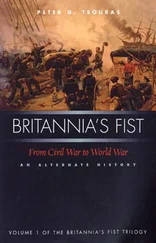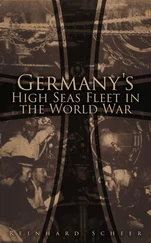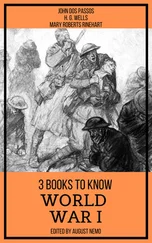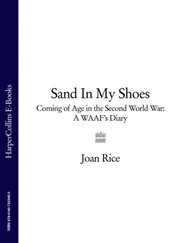16. Hopkins, Australian Armour , p. 132.
17. The slave battery carrier is a tracked vehicle that provides electrical assistance to all vehicles and is particularly valuable in recharging tank batteries.
18. Quoted in Dexter, The New Guinea Offensives , p. 549.
19. AWM54 591/7/25 ‘Employment of tanks in jungle warfare, 4 Armoured Brigade, November/December 1943, Finschhafen Sattelberg Wareo’. This file contains documents relating to these actions:
1st Australian Tank Battalion, Narrative for November 1943
4th Armoured Brigade Training Instruction No. 7 ‘Employment of tanks in jungle warfare’ 9th Australian Infantry Division: Report on use of tanks in operations north of Finschhafen 1st Tank Battalion: Report on tank tactics by the CO, Lieutenant Colonel D.D. Glasgow The 9th Division report contains diagrams showing infantry/tank jungle tactics and the placement of mines by the Japanese. The report is signed by GOC 9th Division, Major General Wootten.
20. Ibid, 9th Division report.
21. Hopkins, Australian Armour , p. 135.
22. See AWM54 591/7/25. This is a particularly informative report, and is unusual in that a senior infantry officer shows a clear understanding of the way tanks can and should be used.
23. An understanding of where other arms can provide assistance and where they need such assistance is vital if an army is to make the best use of all its resources. The role of the artillery was generally understood by other arms, but in the British Army in particular there was an almost complete lack of understanding as to how infantry, tanks and engineers should work together. The Australian Army managed the cooperation much better.
24. The main tasks of the Recce Officer are to provide a link between the infantry and the tanks and to reconnoitre the path along which the tanks will make their next move. The second task especially had been carried out by Recce Officers since World War I. It demands an eye for selecting the best going and the ability to remember the chosen route and then to guide the tanks along it.
25. The 4th Armoured Brigade Training Instruction No. 7 (AWM54 591/7/25) states that the walkie-talkie is the appropriate method of communication between tanks and infantry. It also states that the batteries deteriorated quickly and that when it rained water ran down the aerial and into the set, causing a short which put the set out of action.
26. When radios are used to communicate between the separate elements of a military formation they operate as a network in which all radio stations are on the same frequency. To maintain security the network frequency may be changed as often as every day and the first daily task of a radio operator is to make sure that he is correctly ‘netted’ to the control station. The procedure for voice communication is laid down in detail to ensure that messages are clear, concise and unambiguous. Correct procedure must be learnt by anyone who has to operate a radio.
27. In the jungle (and elsewhere) the tracks to be followed were often soft and muddy. To allow continuous passage of men and vehicles without causing too much deterioration of the track, actions were taken to strengthen the surface. Strength could be provided by natural material such as timber or by specially designed metal covering. The strengthening process was called ‘corduroying’.
28. Most of the information in this section is taken from the 4th Armoured Brigade Training Instruction No. 7, contained in AWM54 591/7/25.
29. The Carden-Loyd military vehicles were the result of a partnership between Sir John Carden and Captain Vivian Loyd. Carden died in 1935, but the joint name was retained for the carrier that was successfully used in WWII. See Christopher Foss and Peter McKenzie, The Vickers Tanks , Patrick Stephens Ltd., UK, 1988, pp. 57–64.
30. A general procedure for dealing with casualties is described in Beale, Tank Tracks , pp. 115–116. First Aid could be given by the front-line soldiers themselves, but the more serious a casualty was the further back he progressed in the medical system. The Regimental Aid Post was the first port of call, then the Advanced Dressing Station or Field Dressing Station, and next a Base Hospital in the field. Provided he had regained sufficient fitness, the casualty could be returned to the front line from any of these stages.
31. When a tank is hit or otherwise damaged it may be necessary to get out quickly. However, tanks are not designed for a quick exit. There are many projections and obstacles and tank crews get somewhat festooned with lanyards, microphones, headsets, binoculars, map-cases, and the loops, belts and pockets of their own clothes. The suggestion of a one-piece overall makes good sense, in that it reduces the chances of getting snagged on the tank’s internal projections, as well as reducing the incidence of colds.
32. Long The Six Years War , p. 405.
33. Ibid.
34. Long, The Final Campaigns , p. 248n.
35. Long, The Six Years War , pp. 405–406.
36. Long, The Final Campaigns, xix–xx.
37. The 2/4th Armoured Regiment War History Committee, Tank Tracks , Halstead Press, Sydney, 1953, p. 93.
38. Hopkins, Australian Armour , p. 143.
39. Peter Charlton, The Unnecessary War , Macmillan Australia, Melbourne, 1983, p. 37.
40. Ibid., p. 33.
41. Long, The Final Campaigns , Appendix 3, pp. 608–616 provides the complete text of General Blamey’s ‘Appreciation on operations in New Guinea, New Britain and the Solomons’. It records the history of what had happened up to May 1945 and the reasons for the decisions taken. It foreshadowed what was to happen after May.
42. Charlton, The Unnecessary War, p. 42.
43. Hopkins, Australian Armour , p. 327.
44. For a detailed description of this action see Long, The Final Campaigns , pp. 160–164.
45. Ibid., p. 183.
46. Hopkins, Australian Armour , p. 159.
47. The use of the Matilda flame-throwing tank (Frog) was recorded in AWM54 925/5/5 ‘Report on tank operations: flame-throwing tanks on Labuan Island July 1945’. This file contains two documents. The first is a tactical and technical report on the use of Frogs, which includes a detailed map of the operation. It was compiled by HQ 2/9th Armoured Regiment. The second is a report by Brigadier S.H. Porter, commanding 24 Infantry Brigade. He makes several perceptive points about infantry/flame tank cooperation and says in his final paragraph: “The effect of flame-thrower tanks on enemy morale was probably the greatest factor contributing to the success of the operation. In the area of operations gun tanks supporting infantry had been used previously; but the enemy, on ground eminently suitable for defence, had stubbornly resisted all our advances. When flame-thrower tanks were used resistance quickly collapsed.’
48. Hopkins, Australian Armour , pp. 167–172.
1. Hopkins, Australian Armour , p. 326; AWM54 44/2/17; and Department of Defence, Army War Effort , Appendix B, sheet 2.
2. Hopkins, Australian Armour , p. 325.
3. Handel, Dust, Sand and Jungle , pp. 142–169, ‘Armoured unit histories’.
4. Ibid. Dickens provides a detailed and vivid history of the battles of the 2/9th Infantry Battalion in World War II, in the course of which they suffered a total of 975 battle casualties.
5. See Bryan Perrett, Tank tracks to Rangoon, Robert Hale, London, 1978, for a description of tanks in the retreat from Rangoon in February to May 1942, in the subsequent battles to hold the Japanese attacks and in the final triumphant return to Rangoon. Some of the country was reasonable tank going, but the Arakan coastline, where Indian and British tanks fought in 1943, 1944, and 1945, had much in common with the jungles of New Guinea, Bougainville, and Borneo.
Читать дальше












